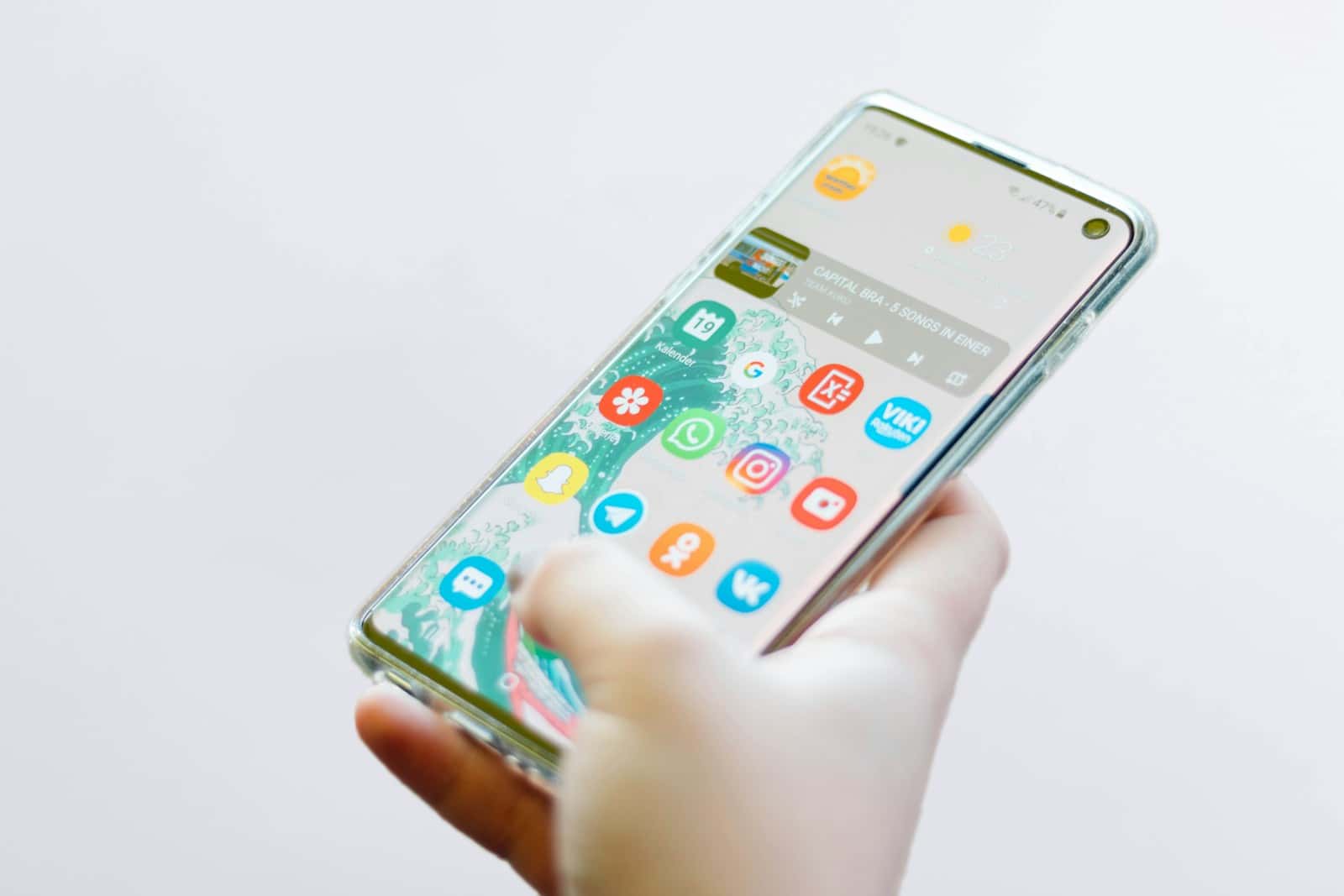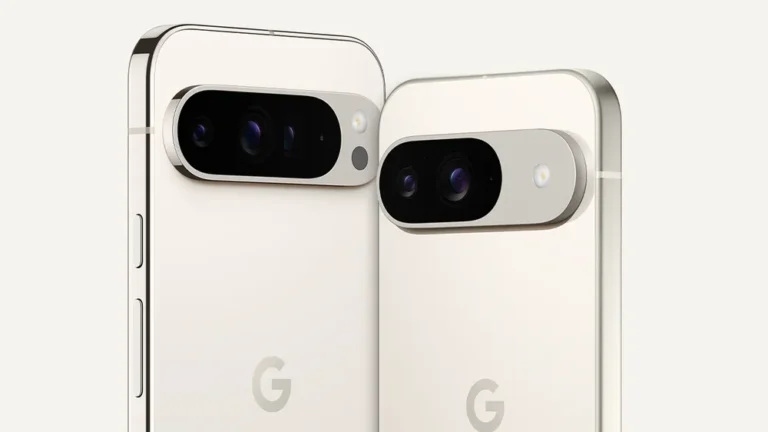
Modern Galaxy phones still ship with a surprising number of dial-in commands—holdovers from the feature-phone era that Samsung engineers and carrier technicians rely on for quick diagnostics. While most users never see them, these “MMI” or USSD codes remain embedded in One UI 6 and the early Android 15 beta builds rolling out to the Galaxy S24 family, Fold 5/Fold 6, and A-series. Used wisely, they can reveal deep firmware details, stress-test every sensor, and even bypass some network locks. Used carelessly, they can wipe your storage in seconds.
Below is the most up-to-date master list as of July 2025, followed by a practical guide to staying safe while you poke around.
Master Table of Samsung Secret Codes
| Code | Function | Category | Risk Level* |
|---|---|---|---|
*#06# | Show IMEI / MEID / serial | General Info | Safe |
*#07# | View SAR (radiation) data | General Info | Safe |
*#1234# | Firmware/AP-CP-CSC versions | General Info | Safe |
*#12580*369# | Full HW/SW build report | General Info | Safe |
*#*#4636#*#* | Android service menu (battery, usage) | General Info | Safe |
*#2222# | FTA HW version | General Info | Safe |
*#1111# | FTA SW version | General Info | Safe |
*#0*# | Comprehensive hardware self-test suite | Hardware Test | Safe |
*#0588# | Proximity-sensor test | Hardware Test | Safe |
*#0589# | Light-sensor test | Hardware Test | Safe |
*#232331# | Bluetooth RF test | Hardware Test | Safe |
*#232338# | Show Wi-Fi MAC address | Hardware Test | Safe |
*#0673# / *#0289# | Audio / melody speaker test | Hardware Test | Safe |
*#0782# | Real-time clock test | Hardware Test | Safe |
*#0842# | Vibration & back-light test | Hardware Test | Safe |
*#0228# | Battery health/ADC readings | Hardware Test | Safe |
*#2663# | Touchscreen firmware update (TSP/TSK) | Hardware Test | Caution |
*#34971539# | Camera firmware info & update panel | Hardware Test | Caution |
*#2263# | RF band selection | Hardware Test | Caution |
*#2683662# | Samsung Service Mode (“hidden” menu) | Service/Debug | Caution |
*#0011# | Field test / GSM-LTE info | Service/Debug | Safe |
*#9090# | Diagnostic USB & logging settings | Service/Debug | Caution |
*#32489# | Ciphering / ePDG security readout | Service/Debug | Safe |
*#872564# | USB logging control | Service/Debug | Caution |
*#7284# | I²C & UART diagnostics | Service/Debug | Caution |
*#9900# | SysDump + logcat clear | Service/Debug | Dangerous |
*#0808# | USB mode (MTP/DM/RNDIS) selector | Service/Debug | Caution |
#0111*0000000# | SIM unlock prompt (certain models) | Network/SIM | Dangerous |
*#7465625*638*# | Network lock status / key entry | Network/SIM | Dangerous |
*31# | Caller-ID hide/show toggle | Network/SIM | Safe |
*#67# | Check call-forward if busy | Network/SIM | Safe |
*43# / #43# | Enable / disable call waiting | Network/SIM | Safe |
##7780## or *#*#7780#*#* | Soft reset (apps/settings only) | Factory/Data | Dangerous |
2767*3855# | Full factory reset with no warning | Factory/Data | Extremely Dangerous |
*#273283*255*663282*# | Launch file-copy/backup tool | Factory/Data | Caution |
*Risk Level is based on the likelihood of data loss or unintended network changes.
How These Codes Work in 2025
Samsung’s dialer still routes MMI strings directly into the RIL (Radio Interface Layer). Because the processing is local, most codes function even in Airplane Mode and without a SIM. Starting with the April 2025 security patch, however, carrier-branded firmware in the U.S. blocks several unlock-related strings (*#7465625… and #0111*…) unless the device is already out of contract. On unlocked models, the full set remains intact.
Why Some Codes Disappear After Updates
- Knox-based hardening: One UI 6.1 tightened SELinux rules, disabling
*#9900#on enterprise-managed phones to prevent log tampering. - eSIM migration: The Galaxy S24 series ships with only eSIM in some regions; physical-SIM unlock codes still appear but return an error.
- Carrier overlays: U.S. carriers now inject their own
carrier_feature.xml, silently overriding Samsung defaults—so the same code can behave differently on AT&T vs. T-Mobile firmware.
Practical Use Cases
- Buying a used phone? Dial
*#06#and*#12580*369#to verify IMEI matches box labels and check for grey-market firmware. - Battery drain mystery?
*#*#4636#*#*shows per-app radio wake-ups; pair it with the Samsung Members battery diagnostics for a full picture. - Microphone crackle after a drop? Run
*#0289#to isolate the speaker, then*#0*#> “SPEAKER” to test volume at max without a music file. - Stuck on HSPA while your friend gets 5G?
*#2263#lets you confirm the modem’s band priority list—helpful for rural fringe reception. - Developing with Android USB?
*#0808#flips between MTP, DM+MODEM, and RNDIS tethering without digging into Developer Options.
Safety Checklist Before You Dial
- Back up first. Samsung Smart Switch or Google One backup will save your photos, WhatsApp history, and e-SIM profiles.
- Stay on Wi-Fi. Several tests disable the modem briefly; you don’t want to drop an important call.
- Read the on-screen prompts. A few menus, like Service Mode, require a restart to exit.
- Never run factory-reset codes unless you’re 100% sure. They execute instantly—no “Are you sure?” dialog like the Settings app provides.
- If the dialer just wipes the code and sits there, it isn’t supported on your build.
What to Do If a Code Doesn’t Work
First, confirm you’re using the Samsung Phone app—not Google Dialer or a third-party dialer, which often intercept USSD. Second, check for carrier restrictions: inserting an unlocked prepaid SIM can sometimes re-enable blocked engineering strings. Finally, the Samsung Members app’s “Diagnostics” tile duplicates much of the hardware test suite, no codes required.
Need deeper help with a specific model—say, the new Galaxy Fold 6 running One UI 7 beta? Let me know what you’re trying to diagnose, and we’ll walk through the safest approach.
best app Hider For Android
Privacy on your Android device is more important than ever. Sometimes you might want to keep certain apps away from prying eyes. Whether it’s dating apps, financial tools, or private photo galleries, having the ability to hide these apps can give you peace of mind.
The best app to hide apps on Android will offer strong security features while remaining easy to use. You have several options available, from dedicated app hiders with password protection to custom launchers that let you organize your home screen. Each solution offers different levels of privacy and convenience, giving you control over who can see what’s installed on your phone.
1: App Hider
App Hider is a powerful tool designed specifically for Android users who want to keep certain applications private. This app creates a secure space where you can hide apps away from prying eyes.
With App Hider, you can create copies of system apps and then hide these copies. This feature is particularly useful when you need to maintain privacy on your device that others might occasionally use.
The interface is straightforward and user-friendly. You don’t need technical knowledge to navigate through the app and start hiding applications right away.
Privacy is the main focus of App Hider. It provides you with a dedicated space where your private apps remain invisible to anyone using your phone.
Security features are built into the app to ensure that only you can access your hidden applications. You can set up additional protection like PIN codes or pattern locks.
App Hider works smoothly on most Android devices. The performance is reliable, allowing you to quickly access your hidden apps whenever needed.
You might appreciate how App Hider doesn’t require rooting your device. This means you can maintain your phone’s warranty while still enjoying enhanced privacy features.
When you need to show your hidden apps again, the process is simple. You can unhide applications with just a few taps whenever necessary.
2: Nova Launcher
Nova Launcher is a powerful tool for hiding apps on your Android device. This popular launcher offers a clean way to keep certain apps out of sight while maintaining easy access for you.
You can hide apps in Nova Launcher by going to Nova Settings, then App drawer, and selecting Hide apps. This feature lets you keep private apps away from prying eyes.
Another method is to long-press an app icon in the app drawer and click the hide icon. This makes it quick to hide apps on the fly without diving into settings menus.
Nova Launcher Prime, the paid version, gives you full access to these hiding features. If you’re concerned about hiding apps from kids or others who use your phone, Nova offers this solution.
The hidden apps remain installed and functional, just not visible in your app drawer. You can also organize your visible apps with custom tabs or folders for better organization.
When you need to use a hidden app, you can access it through Nova’s settings or by using the search function. This makes Nova an excellent choice for hiding system apps you can’t delete but rarely use.
Nova Launcher stands out as one of the most effective ways to hide apps on Android in 2025 while maintaining a customizable, clean interface.
3: DU Privacy Vault
DU Privacy Vault is a powerful tool that helps you protect your private apps and personal content on Android. This app allows you to lock down applications you want to keep hidden from prying eyes.
With DU Privacy Vault, you can hide and encrypt sensitive photos or videos for enhanced privacy. The vault uses password protection to ensure only you can access your hidden content.
The app includes features to lock various applications like Facebook, WhatsApp, Photos, Contacts, and your browser. This gives you complete control over which apps remain private on your device.
You’ll find the interface straightforward to navigate, making it easy to manage your hidden content. The app is virus-free and designed with security as a priority.
DU Privacy Vault offers various capabilities beyond just hiding apps. You can create a secure space for storing personal information away from curious friends or family members who might use your phone.
The app uses minimal resources, so you won’t notice significant battery drain or performance issues. This makes it practical for everyday use on your Android device.
When you need to conceal certain applications temporarily or permanently, DU Privacy Vault provides a reliable solution that doesn’t compromise your phone’s functionality.
4: PrivateMe
PrivateMe is a standout option when you need to hide apps on your Android device. This app lets you hide apps and photos without rooting your phone, making it accessible for all Android users.
The app offers a straightforward interface that makes hiding your sensitive applications quick and easy. You won’t need technical skills to use it effectively. Simply select the apps you want to conceal, and PrivateMe handles the rest.
One advantage of PrivateMe is its security features. The app protects your hidden content behind password protection, ensuring that only you can access what you’ve concealed.
However, some users note that certain apps can’t be hidden with PrivateMe. This limitation might affect your experience if you need to hide specific applications.
When compared to other options like secure folders or built-in hiding features, PrivateMe offers a dedicated solution focused solely on privacy. This specialization makes it particularly effective at its core function.
The app is available on the Google Play Store and has received positive feedback from many users. Its primary appeal comes from combining simplicity with effective privacy protection.
You might find PrivateMe particularly useful if you share your phone with family members or friends and want to keep certain apps private without complicated setup procedures.
5: Hide It Pro
Hide It Pro is a powerful privacy tool for Android users who want to keep certain apps hidden from prying eyes. This app does more than just hide apps – it can also protect your photos, videos, and other personal files.
The clever design of Hide It Pro includes a disguise feature that makes the app look like something innocent. By default, it appears as an Audio Manager on your phone, but you can also choose other disguises like Currency Converter or Jokes.
You can even select a “no icon” option if you prefer to access the app through alternative methods. This makes it nearly impossible for others to find your hidden content.
The app employs two layers of security: appearance disguise and password protection. You’ll create a secret PIN code to access your hidden content, ensuring your privacy remains intact even if someone uses your phone.
Hide It Pro includes a built-in video player and gallery for viewing your protected content without exporting it to vulnerable locations. This means you can safely view your private photos and videos within the secure environment.
You’ll appreciate that Hide It Pro is completely free to use and works across multiple devices. Whether you want to hide sensitive apps or protect personal media, this versatile solution helps you maintain your privacy with minimal effort.
6: App Icon Hider
App Icon Hider is a free launcher app that helps you keep your private apps hidden from curious eyes. It doesn’t uninstall your apps but simply hides them from your phone’s main menu, making them invisible to anyone using your device.
This clever app removes other apps from your phone menu without deleting them. You can still access and use your hidden apps whenever you need them, but others won’t see them in your app drawer.
Setting up App Icon Hider is straightforward. After installation, you can select which apps you want to hide. The app creates a secure space where all your hidden apps are stored.
You can protect your hidden apps with a password or PIN code. This adds an extra layer of security to ensure only you can access your private applications.
App Icon Hider is available on Google Play Store and has become popular among users who share their devices with others but want to maintain privacy for certain apps.
The interface is user-friendly and doesn’t require technical knowledge. You can easily hide and unhide apps with just a few taps.
Remember that App Icon Hider works as a launcher, so it may change how your home screen looks. This is necessary for the hiding functionality to work properly.
7: Vault-Hide Pics & Videos
Vault-Hide SMS, Pics & Videos is a powerful privacy tool that helps you keep your personal content secure. This app allows you to hide photos and videos behind password protection so others can’t access them.
When you use Vault, your sensitive content disappears from your regular gallery apps. You can protect your vault using a PIN, pattern, or password to ensure only you can open it.
One standout feature is the option to hide the app icon itself. This adds an extra layer of privacy since others won’t even know you have the app installed on your device.
The app includes a decoy password feature. If someone tries to access your vault, you can provide this alternative password that shows different content than what you’re actually hiding.
Vault offers free security protection for your personal photos and videos. The encryption system ensures your private media stays private, giving you peace of mind about your sensitive content.
You might appreciate that Vault can also protect SMS messages. This makes it a comprehensive solution if you need to hide multiple types of content on your Android device.
When comparing privacy apps, Vault stands out because it’s specifically designed to protect content you don’t want others to see. The interface is straightforward, making it easy to secure your private media quickly.
8: Keepsafe Photo Vault
Keepsafe Photo Vault is one of the most popular privacy apps available for Android users. It allows you to hide photos and videos behind a secure PIN code or fingerprint lock. This app creates a private space where you can store sensitive content away from prying eyes.
The interface is user-friendly and intuitive, making it easy to manage your private files. You can organize your hidden content into different albums for better organization and quick access when you need it.
Keepsafe offers multiple layers of security to protect your privacy. The app includes PIN codes and touch ID verification to ensure only you can access your hidden content.
An interesting feature of Keepsafe is the break-in alert. This notifies you if someone tries to access your vault with an incorrect password. You’ll know if someone has attempted to breach your privacy.
The app also offers a calculator lock feature, which disguises the app as a calculator. This adds another layer of stealth to keep your private content truly hidden.
Keepsafe allows you to free up space on your device. By moving photos and videos to the vault, you can clear storage on your main gallery while keeping important memories secure.
You can also safely share private content with trusted contacts directly through the app. This feature ensures your sensitive photos don’t end up in regular messaging apps or cloud storage.
9: C Locker Pro
C Locker Pro offers unique features for Android users looking to hide apps and secure their phone content. It stands out with its unusual unlock styles that go beyond the classic slide-to-unlock option.
You can block the status bar, hide status bar clock and icons, and even disable status bar alerts with this application. For those with root access, C Locker Pro allows you to hide the navigation bar for a cleaner look.
The app provides multiple security options to protect your hidden content. You’ll find that C Locker Pro is particularly useful if you want customization beyond just hiding apps.
While C Locker Pro isn’t exclusively an app hiding tool, its locking capabilities make it effective for protecting sensitive applications on your device. Many users consider it among the best app lock options available for Android phones.
You’ll need to download the APK from trusted sources to install this application. The interface is user-friendly despite the advanced features it offers.
Remember that some features require root access to your device. This gives you more control but requires technical knowledge to implement safely.
10: Parallel Space
Parallel Space is a powerful tool that lets you run multiple instances of the same app simultaneously. This means you can sign in to different accounts on apps like social media platforms without logging out of your primary account.
With over 200 million users worldwide, Parallel Space has become a leading Android tool for those who want to separate their personal and professional lives on one device.
You don’t need to root your phone to use this app. It creates a separate space on your device where you can clone and run apps that you want to keep private. This makes it an excellent option for hiding apps you don’t want others to see.
The app works by creating a parallel space behind a fake calculator or other disguised interface. When you open what appears to be a calculator app, you’ll actually access your hidden apps after entering a PIN code.
You can customize your parallel space with different themes to make it more personalized. This helps distinguish between your regular apps and the cloned versions.
For those concerned about security, Parallel Space offers privacy protection features. These include incognito installation and a privacy lock to prevent unauthorized access to your hidden apps.
Some users have successfully used similar technology to hide banking apps from root detection, though your experience may vary depending on your device and the specific apps you’re trying to hide.
Privacy Concerns And Considerations
When using apps to hide other apps on your Android device, you need to be aware of several important privacy risks and potential legal issues. These factors can significantly impact your digital security and legal standing.
Understanding Privacy Risks
App hiding tools request extensive permissions on your device. Many require access to sensitive information that could potentially be misused. Before installing, carefully review what permissions the app requests.
Some free hiding apps contain ads or trackers that collect your data. This information might be shared with third parties without your knowledge. Paid options often provide better privacy protections.
App hiding software might not receive regular security updates. Outdated security can leave your hidden content vulnerable to breaches or exploitation by malware.
Using private space features built into your Android system is generally safer than third-party solutions. These native options are developed with system-level security considerations.
Remember that hiding apps doesn’t make you completely anonymous. Your network activity can still be monitored by your internet service provider or network administrators.
Legal Implications
In workplaces or schools, hiding apps might violate acceptable use policies. Many organizations explicitly prohibit concealing activities on their networks or devices. Check your institution’s rules before using these tools.
Parents should be aware that hiding apps from children is different from children hiding apps from parents. The latter could potentially interfere with parental supervision rights.
Some jurisdictions have laws regarding digital privacy and concealment. Using hiding apps to conceal evidence or facilitate illegal activities can lead to serious legal consequences.
If you share your device with others, hiding apps without their knowledge might create trust issues. This is especially important in family or business relationships where transparency is expected.
Technical Aspects Of App Hiding
Understanding how app hiding functions on Android devices involves both software mechanisms and system integration. These technical elements determine how effectively apps can be concealed and what limitations you might encounter.
How App Hiding Works
Android devices use several methods to hide apps from view. When you hide apps through settings, the system modifies visibility flags in the app drawer without actually removing the application. This process works by changing app metadata to exclude it from displaying in common browsing areas.
Some manufacturers implement this through a dedicated privacy section in settings. For instance, many Android phones allow you to navigate to Settings > Privacy > Hide Apps and secure these hidden apps with a passcode.
More sophisticated hiding methods use sandbox environments that create separate user profiles or spaces on your device. The new Android Private Space feature creates an isolated area where apps remain functionally separate from your main profile.
Third-party launchers like Nova Launcher offer another approach, changing how your app drawer displays without affecting system-level visibility.
System Limitations
Not all Android devices support native app hiding. Older Android versions or heavily customized manufacturer UIs might lack robust hiding features, forcing you to rely on third-party solutions.
Even when hiding apps, background processes may still appear in battery usage statistics or system notifications, potentially revealing their presence. Apps that require consistent background access (messaging apps, location services) might still generate notifications that bypass hiding mechanisms.
Security represents another limitation. While basic hiding prevents casual discovery, it doesn’t provide encryption or advanced protection. Most hiding methods focus on visual concealment rather than data security.
Resource usage continues even when apps are hidden. Hidden apps still consume storage space and may run background processes that impact battery life and performance.
System updates can occasionally reset hiding preferences or change how hiding features work, requiring you to reconfigure your settings after major OS updates.
Frequently Asked Questions
Many Android users seek ways to keep certain apps private on their devices. Here are answers to common questions about hiding apps on Android phones and tablets.
What are the most recommended apps for concealing applications on Android devices?
App Hider stands out as one of the most popular options for hiding apps on Android. It creates a private space for your sensitive applications while disguising itself as a calculator app.
Nova Launcher offers a simpler approach by letting you hide apps from your app drawer while keeping them functional. This method works well for casual privacy needs.
For more security-focused users, DU Privacy Vault and PrivateMe provide comprehensive protection with password-protected vaults. Hide It Pro also offers solid protection while appearing as an audio manager.
Can you hide apps on Android without using a third-party solution?
Yes, many Android devices now include built-in options to hide apps. You can often navigate to Settings > Privacy > Hide Apps on newer Android versions.
Some manufacturer interfaces like MIUI (Xiaomi), One UI (Samsung), and OxygenOS (OnePlus) have their own native app hiding features. These solutions don’t require installing additional software.
The exact path varies by device model and Android version, but looking in your privacy or security settings is a good starting point.
What options are available for hiding apps specifically on Samsung Android devices?
Samsung devices with One UI offer a built-in feature called Secure Folder. This Knox-protected space lets you hide and secure apps with biometrics or a password.
To use it, simply go to Settings > Biometrics and Security > Secure Folder. Once set up, you can move or copy apps into this protected space.
Samsung also offers a simpler option to hide apps directly from your app drawer on newer devices. This can be accessed through your home screen settings.
How can someone hide applications on Android while ensuring they remain functional?
Using launcher-based solutions like Nova Launcher keeps apps fully functional while hidden. The apps continue running in the background and receiving notifications.
Secure spaces like Samsung’s Secure Folder or vault apps maintain app functionality inside their protected environment. Apps can update and operate normally.
For maximum functionality, avoid “freezing” apps or using extreme privacy measures that might prevent background processes from running.
Is there a secure way to hide and lock apps simultaneously on Android?
Vault applications like PrivateMe and DU Privacy Vault excel at both hiding and locking apps. They require authentication before accessing protected content.
Biometric protection (fingerprint or face recognition) offers the most convenient yet secure method for locking hidden apps. Most premium app hiders support this feature.
Two-factor authentication takes security further in some advanced app hiding solutions, requiring both a password and a secondary verification method.
Are there any reliable apps for downloading to keep other applications hidden on Android phones?
App Hider is widely trusted and offers a clean interface with password protection. It regularly receives updates to maintain compatibility with newer Android versions.
For simplicity, Before Launcher provides a minimalist approach that works well for hiding apps on phones used by family members or children.
Hide It Pro (also known as Audio Manager) remains popular for its stealth approach, as it appears to be an innocent audio app while concealing its true functionality.






